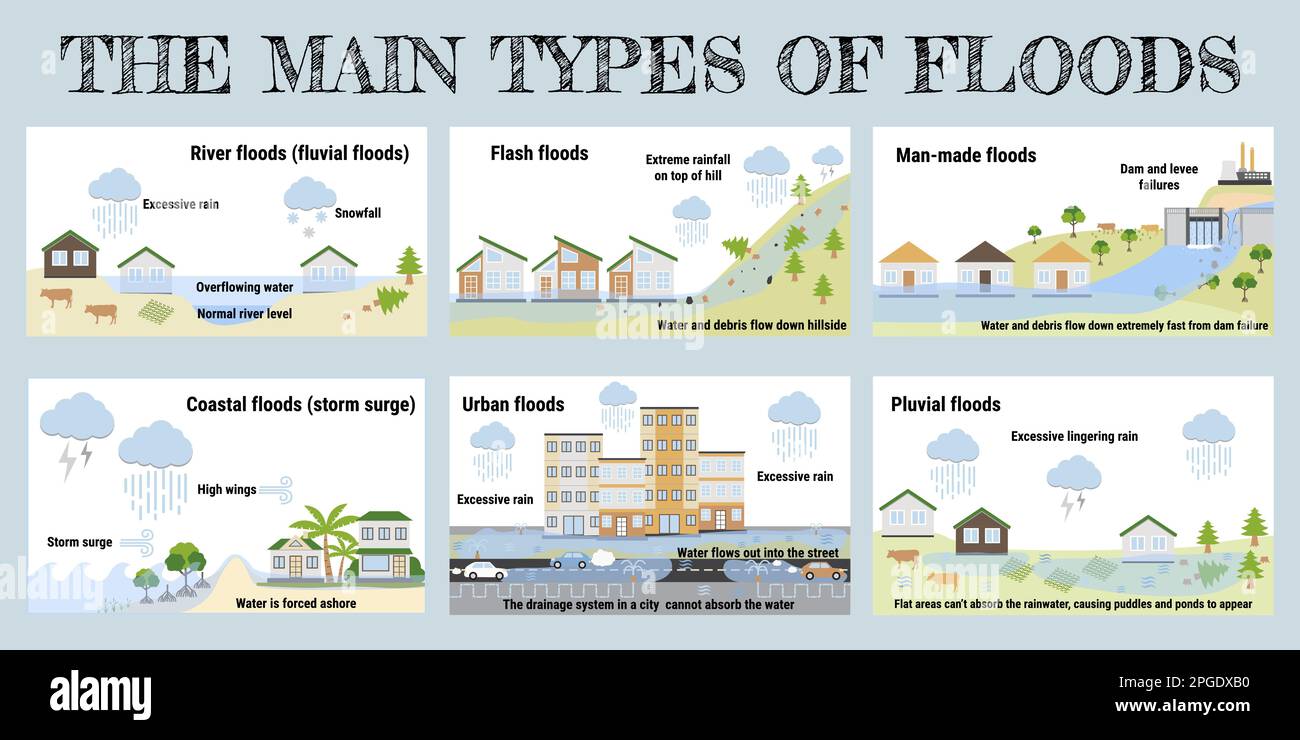Flood Warnings & Flash Floods: A Comprehensive Guide To Safety And Preparedness

Table of Contents
1. Understanding Flood Warnings and Flash Flood Risks
Flood warnings and flash flood watches are critical alerts issued by meteorological agencies to warn the public of impending danger. Let's define these terms clearly: A flood warning indicates that flooding is occurring or is imminent in a specified area. A flash flood is a rapid, sudden flood caused by heavy or excessive rainfall in a short period. Flash floods are particularly dangerous because they develop quickly, leaving little time for reaction. This guide aims to provide a clear understanding of both, helping you prepare and react appropriately.
H3: Types of Flood Warnings
Flood warnings come in various levels, each demanding a specific response:
- Flood Watch: Conditions are favorable for flooding. Stay informed and be prepared to act.
- Flood Warning: Flooding is occurring or is imminent. Take immediate action to protect yourself and your property.
- Flash Flood Warning: A flash flood is occurring. Seek higher ground immediately.
Actions to take:
- Flood Watch: Monitor weather reports, prepare your emergency kit, and identify evacuation routes.
- Flood Warning: Move valuables to higher ground, consider evacuating if advised, and monitor rising water levels.
- Flash Flood Warning: Evacuate immediately to higher ground. Do not attempt to drive through floodwaters.
For real-time warning information, check your local National Weather Service website or equivalent agency in your country.
H3: Identifying High-Risk Areas
Certain geographical factors significantly increase flood risk:
- Proximity to rivers and streams: Areas near waterways are highly susceptible to flooding during heavy rainfall.
- Low-lying areas: These areas naturally collect water, making them vulnerable to flooding.
- History of flooding: Areas with a documented history of floods are statistically more likely to flood again.
- Poor drainage: Areas with inadequate drainage systems can experience rapid water accumulation.
Utilizing flood risk assessment tools and maps provided by your local government can help you determine your level of risk.
H3: Recognizing Flash Flood Warning Signs
Recognizing the signs of an impending flash flood can save lives. Be alert for:
- Rapidly rising water levels in streams, rivers, or creeks.
- Intense and persistent rainfall.
- A sudden change in water color, indicating increased sediment and debris.
- A noticeable increase in the speed or volume of water flow.
- Unusual sounds, such as roaring water or rumbling.
Remember: Flash floods are incredibly fast and unpredictable; immediate action is critical.
2. Creating a Flood Preparedness Plan
Proactive planning is your best defense against the devastating effects of floods.
H3: Developing an Emergency Kit
Assemble a waterproof emergency kit containing:
- Water (at least one gallon per person per day for several days).
- Non-perishable food (enough for several days).
- First-aid kit with essential medications.
- Copies of important documents (identification, insurance, medical records).
- Flashlight and extra batteries.
- Radio (battery-powered or hand-crank).
- Whistle.
- Warm clothing and blankets.
Store your kit in an easily accessible and waterproof location.
H3: Establishing an Evacuation Plan
Develop a detailed evacuation plan:
- Identify multiple escape routes from your home and neighborhood.
- Designate a meeting point for your family outside the flood zone.
- Know the location of your nearest evacuation shelters.
- Plan how you will transport pets and essential belongings.
Practicing your evacuation plan will enhance your readiness during an emergency.
H3: Protecting Your Property
Minimize potential flood damage by:
- Elevating electrical appliances and valuable items.
- Installing flood barriers or sandbags (if feasible).
- Regularly cleaning gutters and drains to prevent water buildup.
- Considering flood insurance.
- Investing in floodproofing measures for your home, such as waterproof sealants and elevated foundations.
3. Staying Safe During a Flood
Your safety is paramount during a flood.
H3: Evacuation Procedures
Obey all evacuation orders immediately. Evacuate calmly and systematically:
- Turn off utilities (gas, electricity).
- Secure your home as much as possible.
- Travel to your designated meeting point or shelter.
- Bring your emergency kit and important documents.
H3: Safe Driving Practices During Floods
Never drive through flooded areas:
- Water may be deeper than it appears, concealing hazards like potholes or washed-out roads.
- Even a small amount of water can sweep your car away.
- Remember the crucial mantra: "Turn Around, Don't Drown."
If you encounter flooded roads, find an alternate route or delay your travel.
H3: Post-Flood Safety
After the floodwaters recede, proceed with caution:
- Beware of contaminated water and potential health hazards.
- Avoid contact with floodwater unless properly protected.
- Check for structural damage to your home before re-entering.
- Report downed power lines and other hazards to authorities.
- Thoroughly clean and sanitize your home.
Conclusion:
Understanding flood warnings, developing a comprehensive flood preparedness plan, and practicing safe behaviors during and after a flood are critical to mitigating the risks associated with these dangerous events. Flash floods pose a particularly severe threat due to their rapid onset and overwhelming power. Don't wait until it's too late! Create a comprehensive plan today, check local weather reports and official sources regularly for flood warnings and flash flood alerts. Protecting yourself and your family from the devastation of floods starts with proactive preparation. Take the necessary steps to be ready for flood warnings and flash floods.

Featured Posts
-
 Office365 Inbox Hacking Leads To Millions In Losses Fbi Investigation Reveals
May 25, 2025
Office365 Inbox Hacking Leads To Millions In Losses Fbi Investigation Reveals
May 25, 2025 -
 The Jenson Fw 22 Extended Range A Comprehensive Guide
May 25, 2025
The Jenson Fw 22 Extended Range A Comprehensive Guide
May 25, 2025 -
 Faiz Indiriminin Avrupa Borsalari Uezerindeki Etkisi
May 25, 2025
Faiz Indiriminin Avrupa Borsalari Uezerindeki Etkisi
May 25, 2025 -
 Esc 2025 Conchita Wurst And Jjs Eurovision Village Performance
May 25, 2025
Esc 2025 Conchita Wurst And Jjs Eurovision Village Performance
May 25, 2025 -
 Demna Gvasalias Gucci Debut Expectations And Analysis
May 25, 2025
Demna Gvasalias Gucci Debut Expectations And Analysis
May 25, 2025
